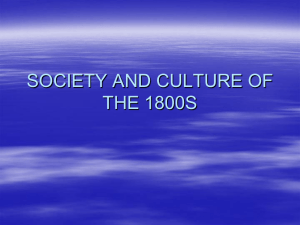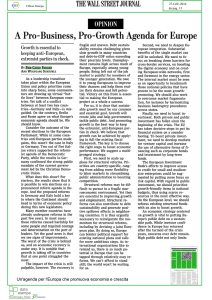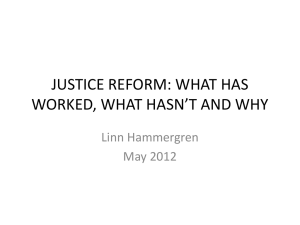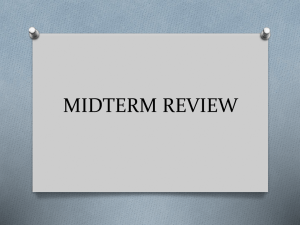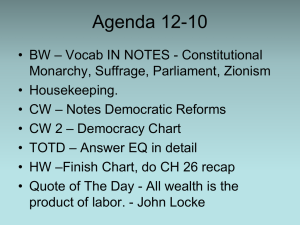Dunning-Kruger effect and its influence on the adoption of reforms
advertisement
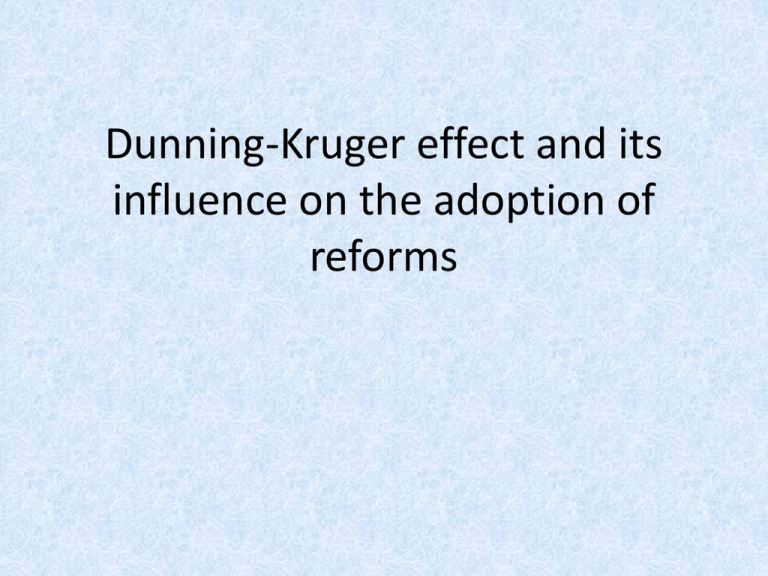
Dunning-Kruger effect and its influence on the adoption of reforms At first it is important to say what the Dunning-Kruger effect is. This phenomenon was first described in 1999 by two psychologists, David Dunning and Justin Kruger. They were brought to explore this phenomenon by an incident, where a robber robbed a bank, without any masking, because believed that if he is smeared with lemon juice, the cameras would not register him. A similar case happened recently, where a robber, that with the help of a spell, believed, that he is invisible and stood near a ATM and took money out of people’s hands, as if nothing had happened. Here is an interesting significant discrepancy between one’s idea about its capabilities and its actual capabilities. These are two extreme cases, but a similar phenomenon occurs in all areas. Dunning-Kruger effect Dunning and Kruger made a series of empirical tests, in which they used students as volunteers and tested their ability in different areas, such as logic, grammar, but also social interaction. After that the participants were subsequently ordered from the least capable to most capable. Then they asked each one to evaluate their results. Dunning-Kruger effect- Graph 1 The achieved results 12 10 8 results 6 Self-assessment 4 2 0 1 2 3 4 5 6 7 8 9 participants 10 Dunning-Kruger effect As you can see, people in the lowest quartile, ie those least capable significantly overestimate their results. On the other hand those most capable conversely underestimate their abilities. Dunning and Kruger made one another sub experiment, in which they took the participants from the lowest and highest quartile and familiarize them with the results of the others and gave them the chance to revise their own score. Dunning-Kruger effect- Graph 2 12 The achieved results 10 8 6 results 4 2 0 1 2 3 4 5 6 7 8 9 10 participants Self-assessment As you can se, the most capable participants revised their selfevaluation and came closer to the actual results, while the least capable did not change their self-evaluation. From the findings we can conclude the following: • Due to their incapability are the less capable not able to achieve better results • Due to their incapability they are not able to realize their own incapability and so have the tendency to blame external factors for their failures (The boss pick on me, I had bad luck...etc.) • Since their not able to indentify the main cause of failures, their incapability, they can not eliminate their mistakes and improve their results and therefore achieve long-term bad results. Dunning-Kruger effect We do not talk about intelligence, but about incapability. Although less intelligent are being far more incapable. Even the very intelligent people can in certain areas have very little knowledge and abilities and for that they are in the given area incapable and so be liable to the Dunning-Kruger effect. Influence the adoption of reforms. However, how does the Dunning-Kruger effect reflect in adoptions of reforms? The main problem is that the adoption and realization of reforms subjects to public choice, so they are brought to practice by people, who are not sufficient experts and therefore do not have the appropriate skills and manifest themselves the consequences of the DunningKruger effect, especially in the these areas: Influence the adoption of reforms. The first problem is that the compiling of needed reforms is a matter of political agendas. Although the agendas are using the views and recommendations of experts from certain area, but there is no guarantee that the politicians who do not have the necessary skills in this area, properly realize what the nature of things is, understand the recommendations formulated by the experts. And when it comes to a wrong interpretation, this interpretation will be discovered, see point 2 of D-K effect. Influence the adoption of reforms. The second case where the D-K effect manifests itself is in the enforcement of reforms is their interpretation. The interpretation of reforms and their presentation to the professional and lay public make the political parties, who may not necessarily have the required capabilities to completely understand the reforms, which may lead to misinterpretation. Influence the adoption of reforms. The last factor is the understanding of reforms by those, who involve these reforms. An ordinary citizen does not have sufficient capabilities for a quality assessment of submitted reforms, and therefore can not consider well the benefits of the reforms, whether positive or negative. An ordinary citizen, when he decides well, has the feeling that he was deceived, or used and resigns from an active participation in the public decision-making. Stop following the policy and going to the polls, which even more reduces his ability and thereby increases his suggestibility. Influence the adoption of reforms. These above-mentioned manifestations of the D-K effect are used by groups based on mutual protection and violations in general valid principles in order to master the system and influenced the reforms right from the very beginning, after the adoption by ordinary citizens. Thanks to this they can influence the reforms enough to enforce their own interests and thus increase their payouts at the expense of the performance of the whole system. Thank you for your attention.


